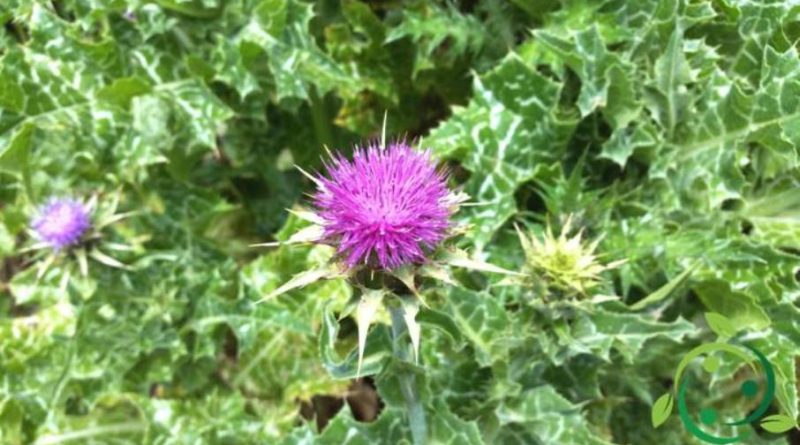How to grow the Milk thistle
How to grow the Milk thistle
Milk thistle (Silybum marianum (L.) Gaertn., 1791) is a two-year herbaceous species belonging to the Asteraceae family. It is a plant widespread throughout the Mediterranean basin, very rustic and very old appreciated both for its beneficial properties and as an ornamental plant so as to be cultivated as a horticultural plant. In this sheet we will see how to grow the Cardo mariano and the most suitable technical and agronomic devices.
It is a plant with a tap root and an aerial part characterized by an average height of 1.5 meters, with a green stem, erect, branched and covered with large lobed leaves with toothed and thorny margins. The leaves are distinguished by their white ribs that, according to ancient legends, are the drops of milk of the fallen Madonna while nursing baby Jesus.
The flowers are pink, purple or purple tubules, with small flat, smooth, black seeds (achenes); the flowers are at the center of an envelope made up of numerous leaf scales and appear in the month of July.
To begin cultivation of this plant it is necessary to harvest the seeds that have been formed in the late summer period, shaking the flower heads, and keeping them in place in the shade and well ventilated for sowing the following spring (March-April). For propagation the seeds should be germinated in seedbeds containing a substrate composed of 1/3 medium-textured soil, 1/3 of sand and 1/3 of peat; after sowing cover with a thin layer of about half a centimeter and wet just enough to keep the soil moist. The transplant must be done at the end of May. Cultivation can be done in irregular spots or in rows maintaining a distance between the rows of 60-70 cm and a density of 8, maximum, 10, plants per square meter.
For the place where to grow them you have to choose a very sunny area so that the solar radiation allows the best synthesis of its active ingredients. The soil must have a neutral or slightly alkaline pH and preferably well endowed with organic substance and without stagnation. In open field the plant grows and develops with the natural water supply so it is difficult to carry out summer irrigation. If grown naturally in pots (in large containers) it is necessary to add water every two to three weeks depending on the texture of the substratum (closer turn for more sandy soils). Also the inputs of fertilizers in open field must be limited to organic substance to be distributed before sowing. Do not give nitrates but rotate this plant after legumes.
For the collection and use of the plant please note that this is edible in all its parts. The leaves are harvested between May and June, while the seeds between July and August; the latter are then placed to dry in a shady and airy place.
The dried leaves and seeds should be stored in paper bags or in glass jars in a dark and dry place. The most tender leaves can be eaten raw, in salads, while the dried ones are used for the preparation of purifying infusions and decoctions in cases of liver intoxication, cirrhosis, and other chronic liver diseases related to alcohol abuse.
The Milk thistle is a plant very resistant to parasitic agents on condition that we do not use herbicides, synthetic fertilizers and do not grow in poorly drained soils and with inappropriate irrigation.

